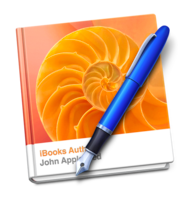Using the iPad in music education ministry
January 26, 2012 Leave a comment
Today we have a guest post from Sarah Mayer who writes on her own blog “Composing Music Education.” Thanks for sharing your thoughts and experiences with us, Sarah!
=-=-=-=-=-=-=-=-=-=-=-=
I think that I use my iPad in unique ways, because really, I work in a unique ministerial capacity. I really am a utility man, so to speak. In my position at our high school, I teach Pre-Algebra for freshmen, assist the high school band director in rehearsal when time allows, teach 60+ private instrumental lessons at our federated elementary schools, and conduct 2 concert bands. It’s a lot to keep track of, to say the least. This is the first school year that I have used an iPad, and I don’t know how I would do my job without it! Here’s a small list of ways that I make use of this amazing piece of technology.
1. iBooks – I have imported my Math textbook, chapter by chapter, into iBooks. My teacher’s edition is collecting dust on my shelf. I have it with me everywhere I go and can do planning anytime I have time. I have also come along good teaching resources for music and have imported those PDF’s into iBooks.
2. Dropbox – I use this app for all of my files now and share files with my teaching partner in the Music Department. It has been a wonderful addition to always have my files available anywhere I am. The sharing feature allows us two grade school band teachers to collaborate on documents from different sides of the federation and work more efficiently. No more editing through email!
3. Noteshelf – Keeping track of my lesson students – assignments, needed materials, parent questions, etc. – has always been a huge challenge. Noteshelf is a great app to use for journals, to-do lists, and so forth. Each of my students has a notebook in this app where I keep a running record of every student’s lesson every week. Having this kind of organization alone has been so helpful.
4. Evernote – Saving the best for last, Evernote is the app I have on every device and couldn’t live without now. My project in progress this year is compiling digital portfolios for my lesson students. Summative assessment is a very powerful tool, and it is a trend in education that I think is here to stay. With the growth of technology in the classroom, digital portfolios are becoming more common every year. I use Evernote in a similar fashion as Noteshelf. Every student has a notebook in the app. During lessons, students archive compositions they’ve done, recordings of their favorite songs from lessons, and I include PDF’s of their progress reports. It truly is a work in progress, and the logistics of archiving are still being worked out. The great part of doing digital portfolios is seeing the kids start to take ownership of what goes in and the self-assessment that goes into it. Kudos to my students for playing along with me!
5. PLN (Professional Learning Network) – Social media really has made the world shrink and made collaboration easy. PLNs can include friends on Facebook, contacts on Twitter, and blogs on an RSS feed. I discovered the idea of creating a PLN from a friend in grad school last summer, and it has become the single most effective way to keep up with new ideas and technology in education. There’s no one app that I use for it, but I use my iPad to keep up with the various sites I use for my PLN.
These examples are only the major ways I use my iPad in ministry. It has changed how I work, and I can’t wait to see how education evolves with the improvement and availability of the iPad. God bless!

 Many pastors spend a good share of their time in the classroom. Here are a couple of articles showing innovative uses for the
Many pastors spend a good share of their time in the classroom. Here are a couple of articles showing innovative uses for the